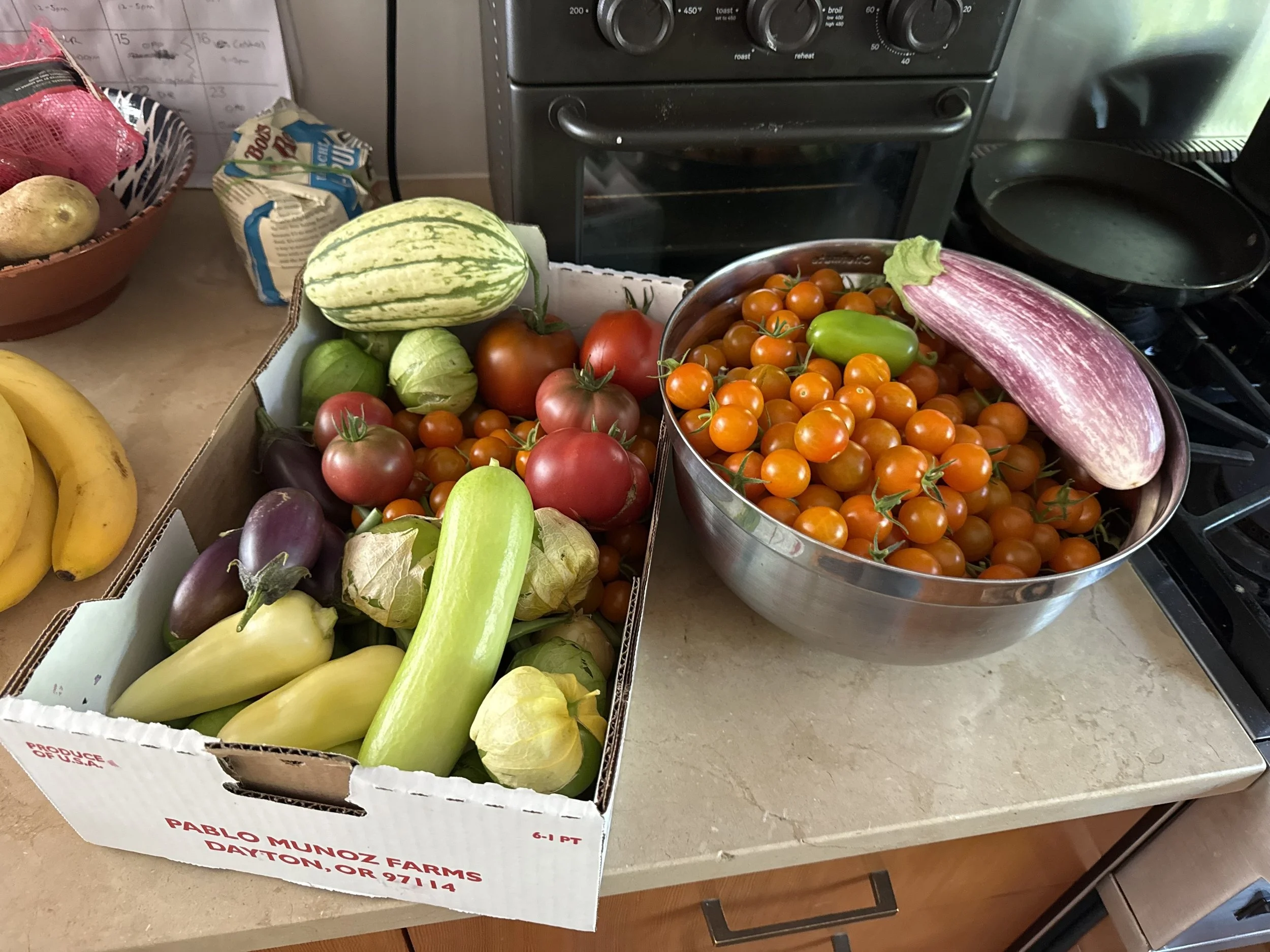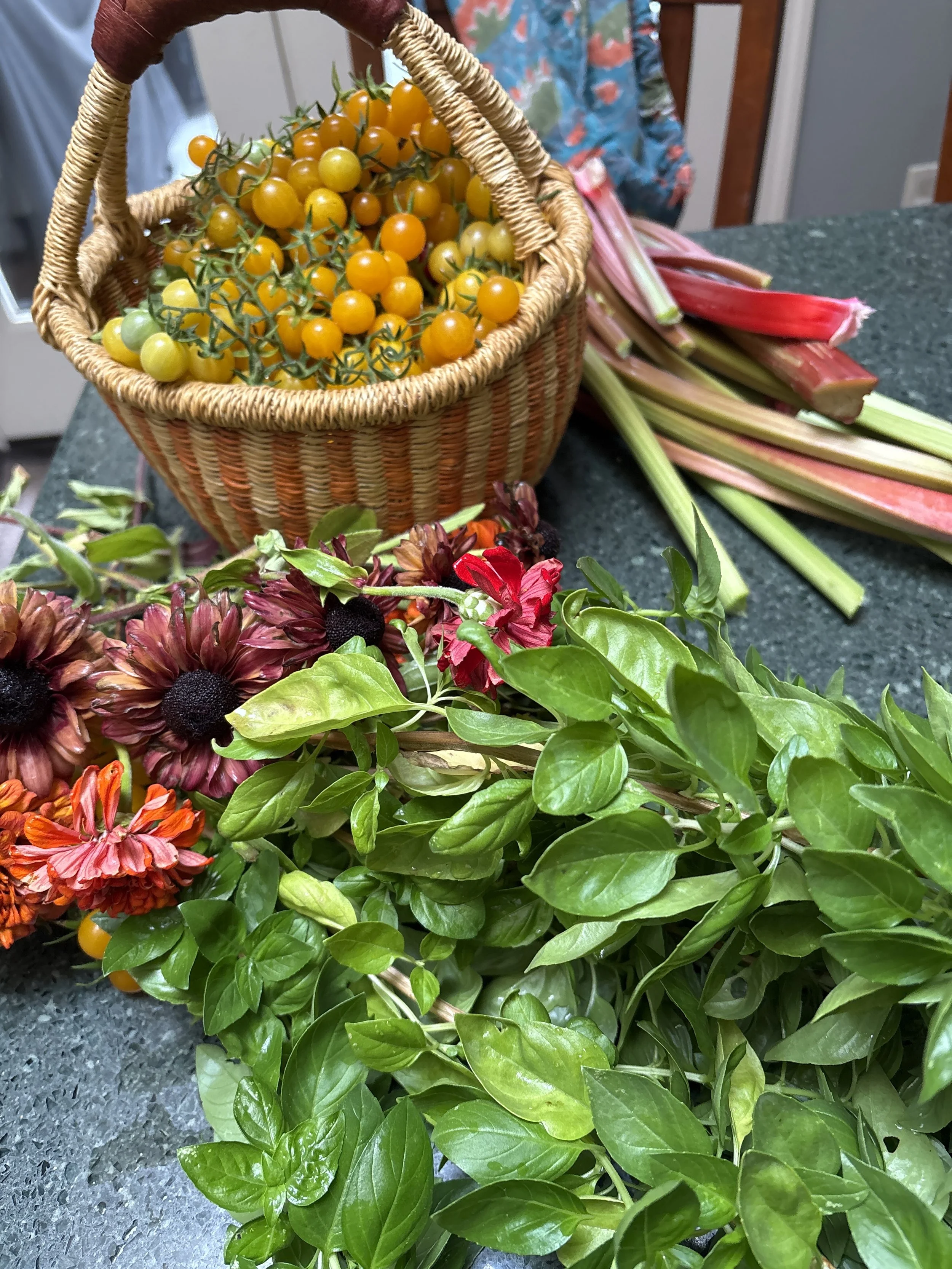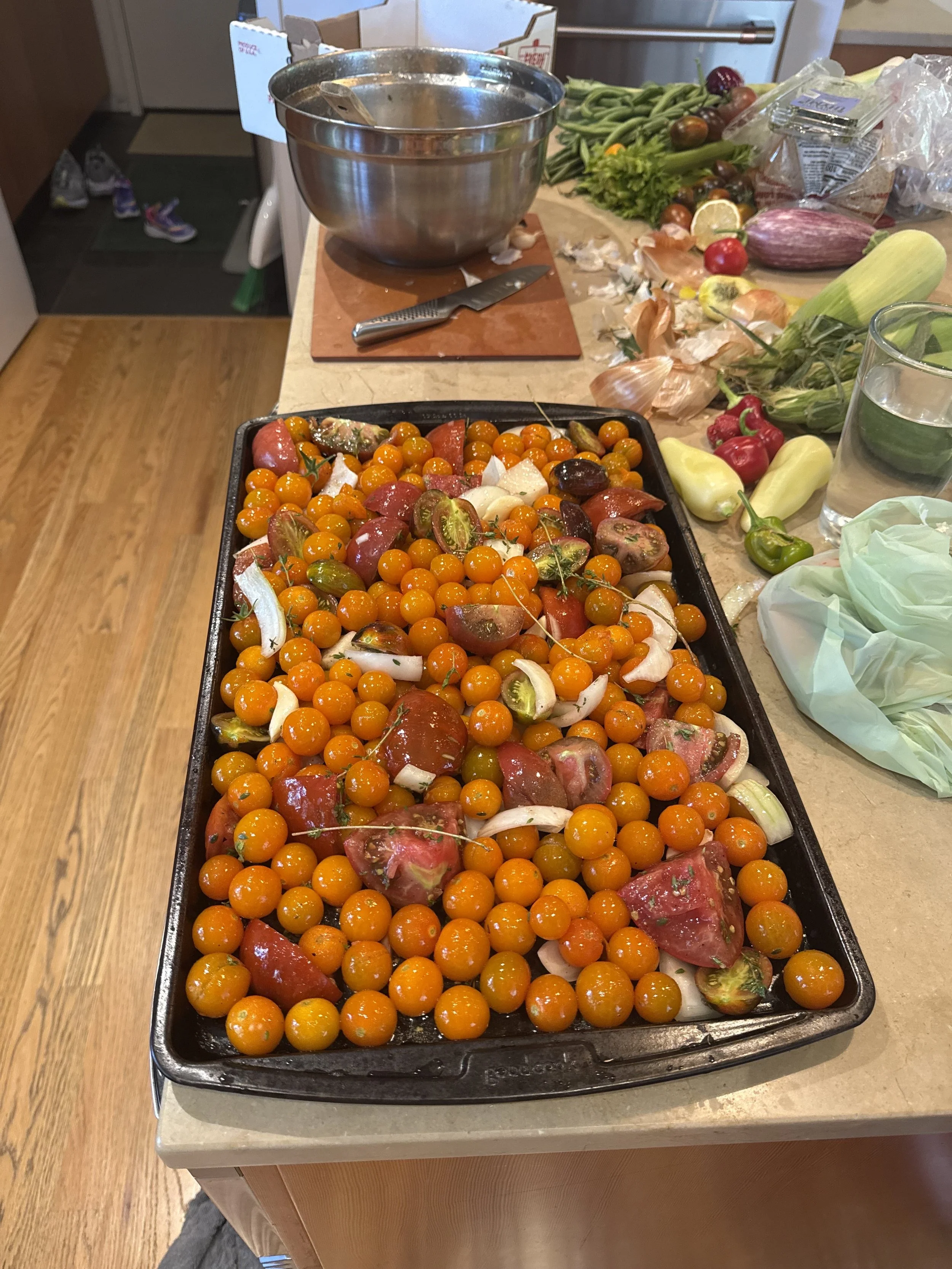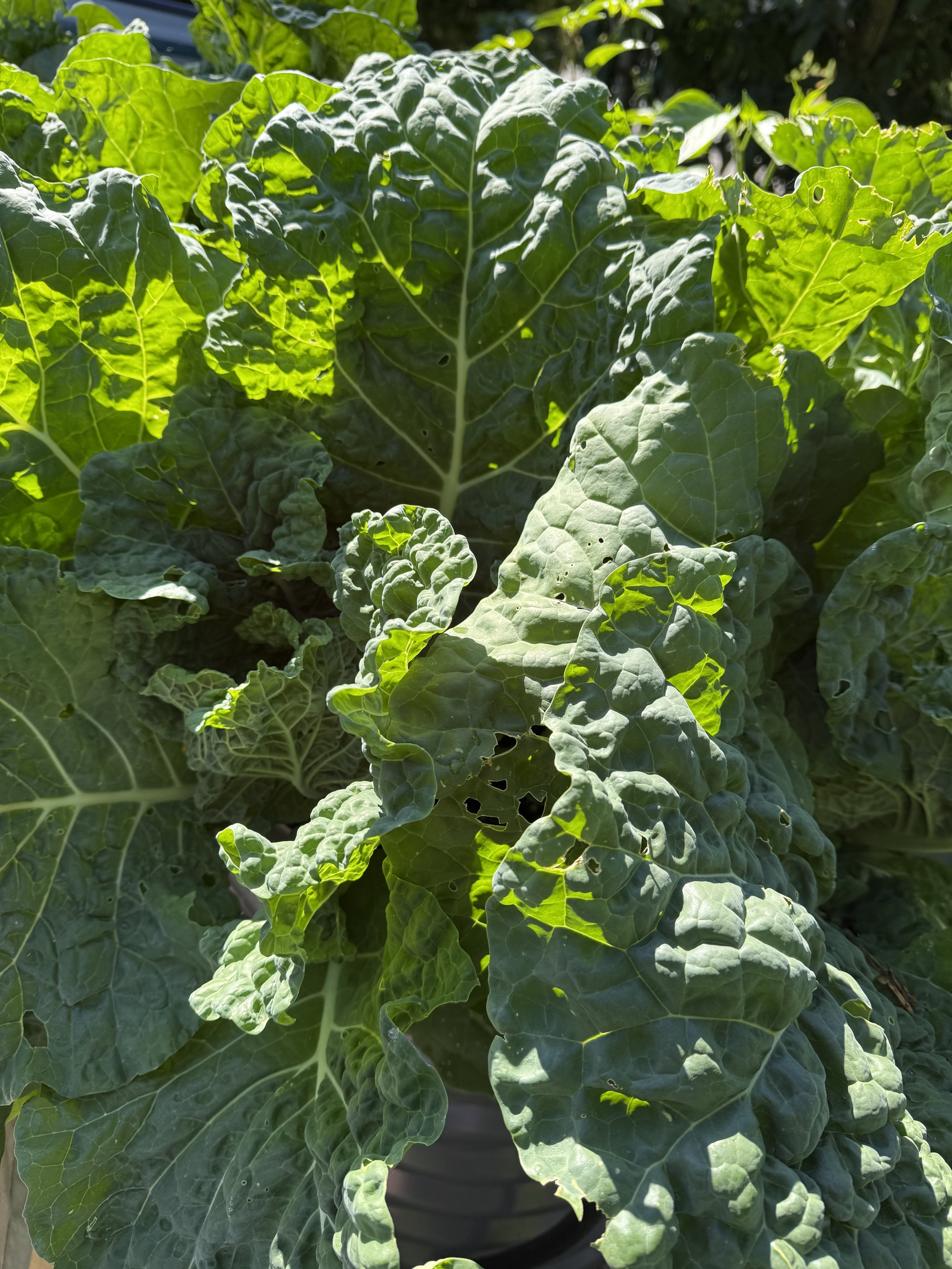Monday, 20 October 2025
11:49 a.m.
Nothing available on the farm table…
but I’ve been busy elsewhere!
My Sunshine Gardenhouse greenhouse is about 30 years old and has needed some refurbishing and improvements. It’s been a big job, but I’m almost done!
I have washed the glazing inside and out, cleaned every inch of the shelves that will remain, the many light fixtures, the ratcheting strings that hold and adjust the light fixtures, the fans, and the power strips.
I’ve uncovered and filled a big hole in the greenhouse floor (a separate story).
I’ve hauled at least 30 bucketloads of pea gravel up to the upper level of the back yard (where the greenhouse stands) to refresh and level the floor. (That represents 210 shovels full.) (Also refreshed the raised bed surrounds, Owen’s dog run, and the path between the barn and the greenhouse.)
I have removed all shelves from the south side of the greenhouse which were stressing the structure and replaced them with freestanding wire metro shelf units.
I have sorted all of the pots and stored them instead of random piles everywhere.
I hung a paper grocery sack up in the rafters next to the wasp nest above the door which is supposed to look like competition and encourage them to move. (I don’t want to kill them.) If they don’t move, I can live with that as they have not been aggressive even when I (unknowingly!) had my head 6 inches away from their nest when I was up on a ladder.
The real star is my husband Scott! He rewired the greenhouse, adding about seven more outlets spaced out along the shelves along the north and south walls. One side of each outlet is controlled by one central timer. There is a separate circuit available if I ever need to run a heater in there (rare).
Consider the previous setup: 6 extension cords all snaking their way to the one corner of the greenhouse with outlets (and not all of those were working because mason bees filled them with mud) plus a multitude of daisy-chained power strips receiving the ends of those extension cords which powered lights and heat mats and fans. There was no easy way to turn off parts of anything, so they were either all on or all off or completely unplugged if I could even figure out WHAT to unplug!
Now all the electrical works and is so organized! I can control all lights with one timer. I can easily turn off one whole shelf unit or even one shelf. Same with the heat mats. Lovely!
THANK YOU, SCOTT!
There are a few leaks, which the recent rains have highlighted. That is really the last item on the list to be addressed.
Next I will be growing microgreens and wheat grass for the hens.
Sherry
Some of farmer Marydee’s harvest. Beautiful! I am so proud of everyone’s efforts and results!
Farmer Jasmyni transforming her successful harvest into a delicious meal for her family! Great job farming!
Here’s a curiosity. A tomato ‘Pomodoro Squisito’ planted on 8 March that never developed true leaves. The seed leaves just kept getting longer, and it recently developed a green sort of knob where the seed leaves would have formed. The stem is quite healthy, sturdy and bristling with hairs. It’s in a 3.5 inch pot. Friend Nancy has named it “Rapunzel”!
Sadly, Rapunzel died in October. She lasted far longer that I ever thought she would. Her remains will be placed in the garden where she spent the summer next to her giant siblings. She will add nourishment to the 2026 garden.
RIP Rapunzel!
Lacinato kale is filling in after I harvested the broccoli. The naturtiums seeded themselves last year.
Please note: These plants are offered straight out of the greenhouse. They are not hardened off. You can harden them off by gradually exposing them to outdoor conditions for a week OR (as I do) plant them in the garden right away and give them a little protection for a week.
My donation box will be out. Your help with the cost of seeds and supplies is most appreciated!
Thriving in the garden now are (front to back) mini cabbage ‘Alcosa’, Chinese cabbage ‘Red Trumpet’, and mini butterhead lettuce ‘Tom Thumb’.
Tomatoes protected by makeshift little greenhouses in the garden. I close up the tops at night. You can also use this method with peppers and eggplants.
Mini cabbage ‘Katarina’ looks like this when ready to harvest. They are delicious!
Tomato ‘Polaris’ has large flowers for a tomato as well as large potato type leaves.
Rabbit in the yard next door. - WILLS FARM
Rabbits also like vegetables!
Remember to protect your vegetable plants from rabbits. They really enjoy fresh greens.
Kohlrabi stems are beginning to swell.
Did you know that very young pepper plants assume a sleeping position at night? They raise up their leaves which are in a horizontal position during the day. Also, different varieties of pepper go to sleep at different times.
Newly planted vegetable starts covered.
Tips to ensure success when planting.
Birds like vegetables, too! (But not as much as rabbits..)
If you see this zig zag pattern of cuts on the edge of leaves, that is from birds. Notably (last year) they seemed to avoid the red lettuces entirely.
My harvest of broccoli ‘Gemini’ and ‘Purple Magic’.
A unique way of handling tomato plants when the sunniest spot is the driveway.
Track your harvest using this form! In 2023, I produced 9495 individual vegetables, according to Quintin who figured out the total from my blog. (Thank you, Quintin!) That included individual pea pods and cherry tomatoes and was recorded on scraps of paper. Last year I did not produce a reliable harvest record. I resolve that this year will be different, using this new form which you can download.
(Check your printer settings just before printing. You may need to adjust the scale percentage to fit the page.)
Cabbage ‘Alcosa’.


















